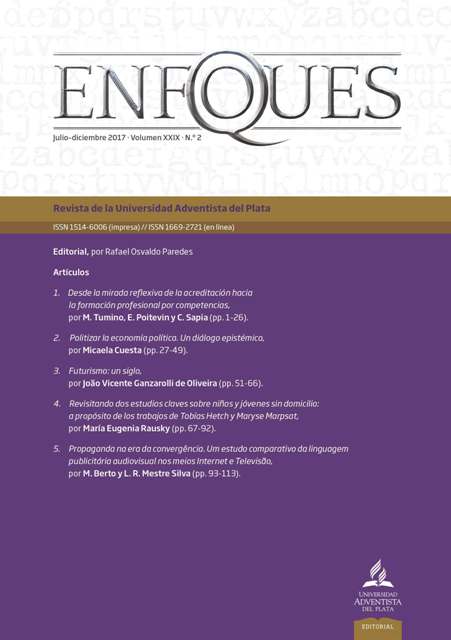Futurism: a century
Keywords:
Futurism, Modern art, Occidental culture, ContemporaneityAbstract
A little tempo ago, Futurism completed one century of existence. It has been the lastartistic movement that managed to gather under one banner all the major arts. In Futurism– along with the other major genres of artistic expression of the xxth century,particularly Dadaism and Surrealism – are the seeds of what we now call contemporaryart. This article aims to discuss some historical aspects of the futuristic eruption;furthermore, it provides some critic basis for its fair evaluation.Downloads
References
Dicionário de artes plásticas (Rio de Janeiro: Escola de Belas-Artes da UFRJ, 2005), 278.
Javier Itúrbide Díaz et al., Cuando las cosas hablan: la historia contada por cincuenta objetos de Navarra (Pamplona: Gobierno de Navarra, 2015), 11.
Otto Maria Carpeaux, Historia de la literatura occidental, vol. 7 (Río de Janeiro: Edições O Cruzeiro, 1966), 3058.
Santiago Prampolini. Historia universal de la literatura, trad. Dante Ponzanelli, vol. 9 (Buenos Aires: Uteha, 1941), 315.
Cf. Alberto Cesare Ambesi et al., Encyclopédie de l’art, trad. Béatrice Arnal et al. (Paris: Librairie Générale Française, 1991), 112.
Citado por Alberto Cesare Ambesi et al. en Ibíd., 913.
Cf. Udo Ulfkotte, Mekka Deutschland. Die stille Islamisierung (Rottenburg: Kopp Verlag, 2015), 49-52; y Bat Ye’or, Eurabia: l’axe euro-arabe (Paris: Jean-Cyrille Godefroy, 2014), 84, 87-88, 168.
Veáse Alberto Cesare Ambesi et al., Encyclopédie de l’art, 943.
Citado por Gerd Bornheim en O sentido e a máscara, 2.ª ed. (São Paulo: Perspectiva, 1969), 19.
Cf. Toby Clark, Art and propaganda in the Twentieth Century. The Political Image in the Age of Mass Culture (Londres: The Everyman Art Library, 1997), 81.
Otto Maria Carpeaux, Uma nova história da música, 2.ª ed. (Rio de Janeiro: José Olympio, 1967), 125.
Cf. H. W. Janson, História da arte, trad. Maria Manuela Rocheta Santos y J. A. Ferreira de Almeida (Lisboa: Calouste Gulbenkian, 1992), 686.
Cf. Fritz Baumgart, DuMont’s Kleine Kunstgeschichte (Colonia: DuMont, 1979), 314-315.
Cf. Veáse, en particular, Allgemeine Geschichte der Kunst: die Kunst des Mittelalters, trad. Ullrich Kuhirt et al., vol. 7 (Leipzig: Seemann, 1961).
C. K. Chesterton, Alarmas y digresiones, trad. Teresa Reyles, 2ª ed. (Buenos Aires: Espasa-Calpe, 1947), 70.
Cf., por ejemplo, Friedrich Nietzsche, Wille zur Macht (Stuttgart: Kröner, 1952), 734.
Veáse Baumgart, DuMont’s Kleine Kunstgeschichte, 307.
Veáse, Teófilo Urdánoz, Historia de la filosofía, vol. 6 (Madrid: Biblioteca de Autores Cristianos, 1978), 35-36, 51-54.
Veáse, Alberto Cesare Ambesi et al., Encyclopédie de l’art, 388-390; y Katja Fieder et al., Brockhaus, die Bibliothek: Kunst und Kultur, vol. 6 (Leipzig: Brockhaus, 1997), 74.
El mismo género de ironía domina las doscientas páginas que el crítico e historiador del arte francês Jean Clair escribió sobre el arte del siglo xx (cf. Considérations sur l’État des Beaux-Arts [Paris: Gallimard, 2008], 13).
Veánse las observaciones precisas de Hendrik Roelof Rookmaker en su inimitable ensayo Modern Art and the Death of Culture (Wheaton: Good News, 1994), 119-120.




